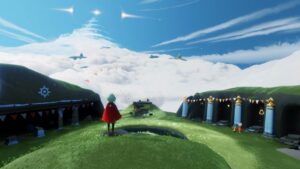Managed to Make Unity Volumetric Clouds
Make Unity Volumetric Clouds
Using the volumetric advanced material expression will allow you to apply a realistic scattering effect. Volumetric advanced materials trace the multiple octaves of light transmittance. The parameters of these materials can be set to achieve different effects without negatively impacting performance. You can use different levels of occlusion and eccentricity in the volume material to change the way the clouds are rendered.
The first step to make a volumetric cloud is to create a volume. This can be an existing volume or a new one. You can also customize the settings of the volumetric clouds to achieve the exact look and scale you desire. To get started, you’ll want to create a project using HDRP.
A cloud shader is what allows volumetric clouds to be rendered. This shader consists of state-of-the-art shaders to keep the framerate as high as possible. It will also react to directional light and lightning. It will also produce cubemaps and water reflections. You can also use cloud probes for easy access to the density of clouds. This shader will run on the GPU.
Volumetric clouds are an excellent way to enhance the visual quality of your project and make skies more believable. With these clouds, you can create jaw-dropping volumetric sun shafts and sunsets. You can also use these clouds to produce realistic shadows on landscapes. And since they are physically based, volumetric clouds can interact with most HDRP systems.

Managed to Make Unity Volumetric Clouds
Clouds aren’t always the easiest to create in Unity. In fact, they can be extremely complex and can consume a significant amount of memory. To avoid these issues, use a shadow map approach. You can use the right mouse button and the mouse wheel to scale the velocity speed painted into the cloud.
One of the challenges of rendering unity volumetric clouds is the cost of rendering them. There are various operations that must be performed to make clouds look realistic. Using perlin noise, for example, renders clouds with a texture that resembles smoke. Those particles change color and density and eventually form a cloud shape.
With volumetric clouds, you can also create a realistic sky and terrain overlay. These elements also have ambient sound. If you want to include a rainy or stormy background, you can also use a stormy environment with volumetric clouds. Weather Maker uses a complete weather system that includes volumetric clouds and ambient sound. Using the weather system will save you thousands of hours of development time!
You can use either the Cloud Map or Clout LUT texture to define the shape of volumetric clouds. The Cloud Map LUT texture will use different textures for different types of clouds. The Clout LUT texture will use a separate grayscale texture for each channel, and is a bit more complicated than importing a map texture. The latter type is best for projects where you need very specific clouds. The Cloud Control Manual is another method that is useful if you want to have a very specific cloud structure.